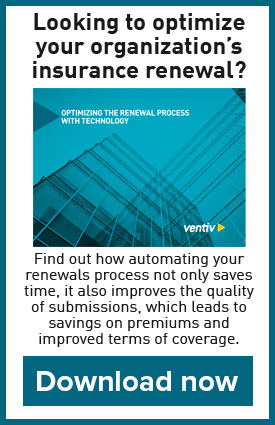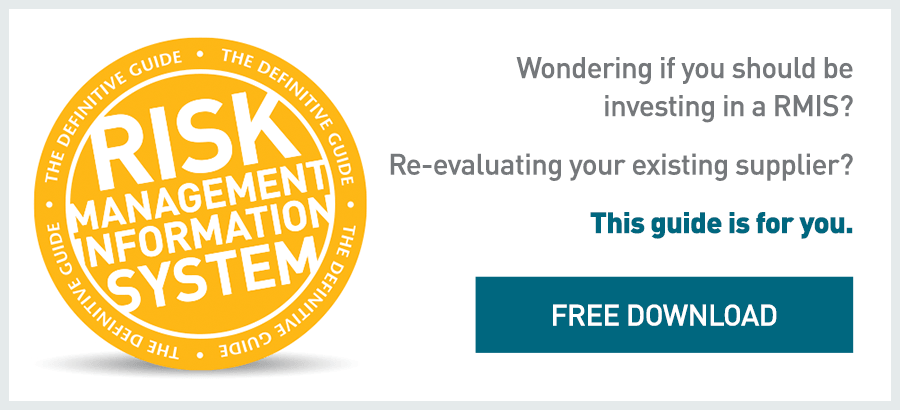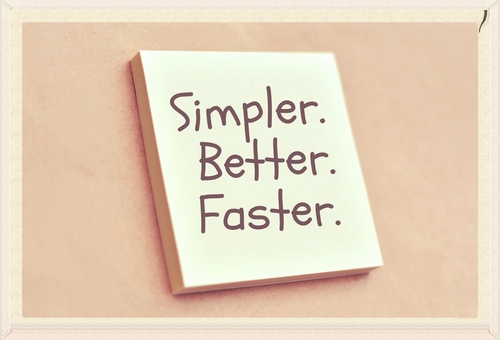 When it comes to gathering and consolidating insurance renewal data, risk and insurance managers can get caught up in endless spreadsheets and having to make calls and send emails to their colleagues, reminding them to submit their data and asking them for clarification of the information already submitted.
When it comes to gathering and consolidating insurance renewal data, risk and insurance managers can get caught up in endless spreadsheets and having to make calls and send emails to their colleagues, reminding them to submit their data and asking them for clarification of the information already submitted.
In Ventiv's experience, clients using spreadsheets will spend as much as 75 days collecting, checking and formatting data. The knock-on effect is that insurance brokers and underwriters will often receive their clients’ data late into the renewal process. This means that brokers have less time to thoroughly analyse the renewal data and prepare the best possible insurance submission that:
- Clearly explains a client's risk to the underwriters.
- Allows them to negotiate the best premiums and policies.
- Establishes the best programme design considering coverage and total costs
 To help reduce the time spent collecting and consolidating renewal data, many risk and insurance managers use risk management information systems (RMIS).
To help reduce the time spent collecting and consolidating renewal data, many risk and insurance managers use risk management information systems (RMIS).
If you are concerned over the quality of your submission data and wondering whether investing in a RMIS for your annual renewal process is right for your organisation, ask yourself these 10 questions:
- Do you find yourself trawling through data and spreadsheet after spreadsheet, rather than managing risks?
- Are you unsure of all the exposures across your company’s operations?
- Do you find the insurance team’s time being squeezed during the renewal process: time spent collecting, checking and formatting data as well as the normal day-to-day tasks?
- Do you put the burden of renewal on your broker or pass the problem on to the underwriter?
- Is it difficult to get hold of previous years’ renewal data?
- Are there gaps in the data you’re submitting to your brokers (e.g., missing values or business units not supplying data)?
- Is there a lot of back and forth with business units to check that data is correct?
- Are your renewals always finished at the eleventh hour (or, do you encounter major last-minute issues that cause delay)?
- Do you suffer from a poor submission and minimal time for your broker to place your risks in the market?
- Are you being asked more questions after you’ve submitted your presentation to the underwriters?
If you answered "yes" to most of the questions, then a RMIS system can help you reduce the time taken to collect data and produce renewal reports. A RMIS can also improve data accuracy and thoroughness.
If you’re spending far too much time managing renewal data and as a result taking your eye off the ball on policy wordings and negotiations with brokers and underwriters, a RMIS could be the answer. By managing data through a IRM system like RiskConsole, you’ll have confidence that the terms of your insurance programme are as good as you can get for the quality of cover, the quality of insurer and the quality of advice.
You can present your renewal submission and resulting renewal terms with confidence, knowing it is backed up by quality data and analysis coming from your RMIS.
Angus Rhodes is one of Ventiv Technology's senior risk management information system consultants. Contact Angus at angus.rhodes@ventivtech.com.









 When it comes to gathering and consolidating insurance renewal data, risk and insurance managers can get caught up in endless spreadsheets and having to make calls and send emails to their colleagues, reminding them to submit their data and asking them for clarification of the information already submitted.
When it comes to gathering and consolidating insurance renewal data, risk and insurance managers can get caught up in endless spreadsheets and having to make calls and send emails to their colleagues, reminding them to submit their data and asking them for clarification of the information already submitted.

